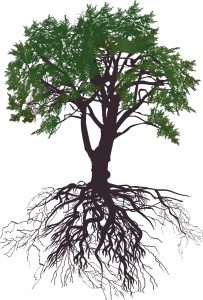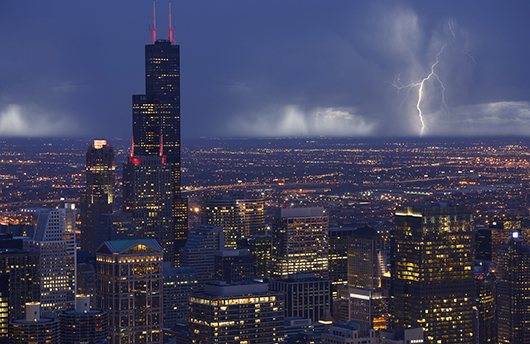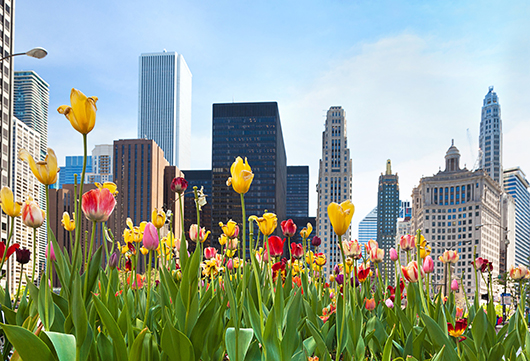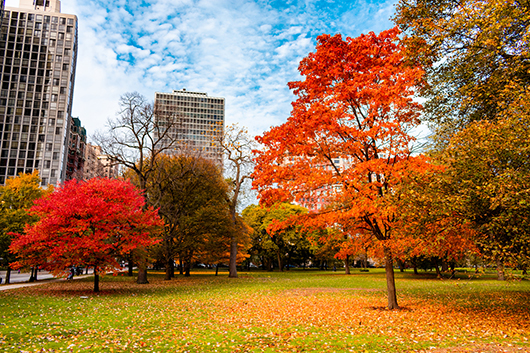Now that the spring season is in full swing in the Chicago area, there are more people working in their yards, mowing the lawn, planting gardens, and tending to their trees. Much of the yard work that is done in the spring involves new planting, whether it is the planting of new flower beds and vegetable gardens or spreading seed for grass. For these types of plants, spring is the best season to do some new planting. But what about planting new trees?
Is it best to plant new trees in the spring when you plant new flowers? Or is it best to plant trees in the early fall season? The answer depends on the type of tree. In general, trees should be planted at a time when they will be able to develop their root system before being exposed to extreme hot or cold temperatures or dry spells. Therefore, trees that take more time to establish their root system are best planted in the spring and trees that develop their roots quicker are best planted in the late summer and early fall.
In this guide, we will explain the advantages and disadvantages of planting trees in the fall and spring, which tree species are best to plant in each season, and provide tips to effectively plant your trees. If you have a newly planted tree in your yard and you want to ensure that it receives the proper care, talk to our professional arborists at Hendricksen Tree Care. We provide complete tree care services to ensure that your trees are properly maintained, and we can help prevent common insects and diseases.
Planting Trees in the Spring
Conventional wisdom says that trees are best planted in the spring when the new growing season begins. However, this is not always the case. The excessive rain fall in the Chicago area during the spring may make it seem like the right time to plant, but the wet soil makes planting a new tree difficult. It is best not to dig a hole in the soil when it is wet, and the root system will not properly develop in wet soil. This means that any trees planted during the spring will have to be planted after the soil has dried. For many tree species, late spring planting will not give them enough time to establish their root system before the summer heat.
The best trees to plant in the spring are the species with shallow, fibrous root systems and species that are slow to establish themselves. Shallow root systems have an easier time developing in wetter soil and it is important for slower establishing species to have enough time to grow and develop before they go dormant for the winter. Make sure that if you do plant a new tree in the spring, you do it early enough in the spring so that the roots can develop before they are exposed to hot, dry conditions.
Trees to Plant in the Spring
- Bare root trees: Bare root trees are best planted in the spring because the naked roots need moisture to develop. The wet soil in the spring creates the perfect conditions. These roots are also vulnerable to damage in the winter, so they need more time to develop before the winter season. The species of bare root trees you can plant in the spring include oak, willow, birch, gingko, dogwoods, walnut trees, and pecan trees.
- Conifers: Conifer trees, or cone producing trees, are best planted in the spring because they need moisture. These trees cannot get moisture from the frozen soil in the winter which causes them to lose their needles. Conifers need time to establish themselves before the winter. Cedars and spruces are examples of conifers that can be planted in the spring.
Evergreens: Evergreen trees can generally be planted in the spring or the fall, as long as they are not exposed to extreme heat too early in their development. Rhododendrons and yews are evergreens that are best planted in the spring.
Planting Trees in the Fall
The fall season is generally considered the best time to plant new trees for several reasons. The climate in the fall is generally more consistent than the spring, as the temperatures are cooler to moderate and do not vary as widely. The combination of cooler temperatures with the warm soil in the fall creates more favorable growing conditions that are easier on the trees, especially in their early stages of development. Roots grow better and stronger when the soil is warmer than the air and the rain in the fall helps the trees establish their roots. This is why trees with large, deep root systems do better in the fall. Trees planted in the fall are also less likely to be exposed to extreme heat as well as pests and diseases.
When planting trees in the fall, it is best to plant them between mid-August and mid-October. If you plant your trees in November or December, they will not have enough time to establish their root systems before the ground becomes frozen and they go dormant. Hardy tree species will be able to establish their roots before the winter and they are more resistant to the winter’s harsh conditions.
Trees to Plant in the Fall
- Deciduous trees: Many types of deciduous trees, specifically those with large, deep roots, benefit from being planted in the fall. Deeper root systems are hardy and can better withstand the harsh conditions of the winter as long as they have a chance to establish before extreme cold temperatures. Deciduous trees that should be planted in the fall include alder, ash, crabapple, hawthorn, locust, elm, linden, maple, and sycamore trees among others.
- Evergreens: As mentioned in the previous section, evergreens can be planted in the fall as long as they have time to become established before being exposed to extreme cold. Pine trees and spruces should be planted in the fall.
Tree Planting Tips
Whether you are planting a new tree in the spring or the fall, it is important to know how to plant a tree correctly to give your new tree the best chance to thrive. The following tips will help you plant your new tree effectively.
-

Choosing the right time and conditions for planting a tree will help the tree grow a strong root system in its new home
Choosing a tree: There are several things you must consider when choosing a new tree for your landscape. First and most important, make sure you choose a tree that is native to the Chicago area so that you know it can survive the extreme conditions of our summer and winter weather. You should also consider the function of the tree, whether you are looking for an ornamental tree to enhance the landscape appearance or a tree to provide shade. Take the size of the tree into consideration as well so that you plant a tree that has enough room in your yard to grow.
- Choosing a location: You must take careful consideration when choosing a location to plant your tree. The tree should be planted in a spot where it will look good, fulfill its intended function, whether it is an ornamental or shade tree, and have the space to grow to its full potential. You also need to make sure that the tree is far enough away from your home, garage, shed, and powerlines so that the roots or branches do not cause damage.
- Soil testing: Once you choose an area to plant your tree, you should test the soil to determine the pH level and organic matter content. If the pH level or organic matter content needs to be adjusted, it must be adjusted before the tree is planted. The level of organic matter should be about 3 percent and the ideal pH level depends on the type of tree.
- Digging the hole: When digging the hole to plant your tree, the width of the hole is more important than the depth. Planting a tree too deep in the soil will make oxygen exchange between the roots difficult which can suffocate the root system. The hole should not be any deeper than the root ball or root mass but should be 3-5 times as wide. The flare of the trunk that is towards the base of the tree should be above ground.
- Mulching: After the tree is planted, you should lay a 2-3 inch layer of mulch over the entire planting area, from the trunk of the tree to the furthest reach of the branches. There should be an inch or two between the mulch and the trunk so that the mulch is not directly touching the trunk. Mulch will help retain moisture in the soil for the root system and prevent the growth of weeds.
- Watering: Your new tree should be watered regularly in its first year and periodically after it has been established to prevent water stress. It is best to slowly soak the soil surrounding the tree to get water to the root system. Make sure you check for signs of water stress, such as yellowing leaves.
Fertilization: New trees should be fertilized in the spring. If you plant a tree in the fall, wait until the following spring to fertilize. Soil in the Chicago area already has plenty of nitrogen, potassium, and phosphorus so you only need to fertilize your tree when necessary. If your tree is growing slowly or blooming late, a fertilizer application can give it a boost.
Professional Tree Care for the Chicago Area

Consider working with a professional arborist to plan out the best conditions for planting your new Chicagoland trees!
If you are looking to plant a new tree in your yard and you aren’t sure when to plant it, refer to this guide to determine if the tree is better planted in the spring or the fall. Regardless of which season you plant, you need to give the new tree enough time to establish its root system either before the hot dry conditions of the summer or the harsh cold conditions of the winter. If you plant too late in either season, your tree will not have a high chance of survival. Once the tree is planted, it is important for it to receive the proper care so it can resist insects and diseases and grow to its full potential.
Hendricksen Tree Care provides complete tree care services to help homeowners in the north Chicago suburbs properly care for their trees. Our ISA certified arborists can maintain your tree with proper fertilization, diagnose and treat insect infestations and diseases, and provide tree pruning services.
Hendricksen Tree Care proudly serves the north and northwest Chicago suburbs including Arlington Heights, Northbrook, Mount Prospect, Palatine, Lake Zurich, Park Ridge, Glenview, and Winnetka.
















